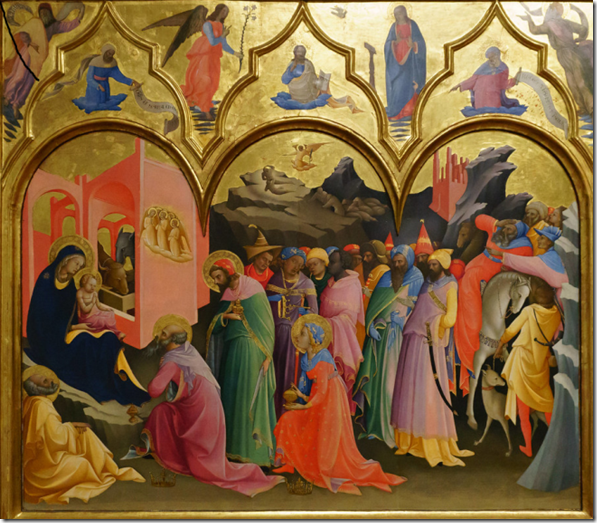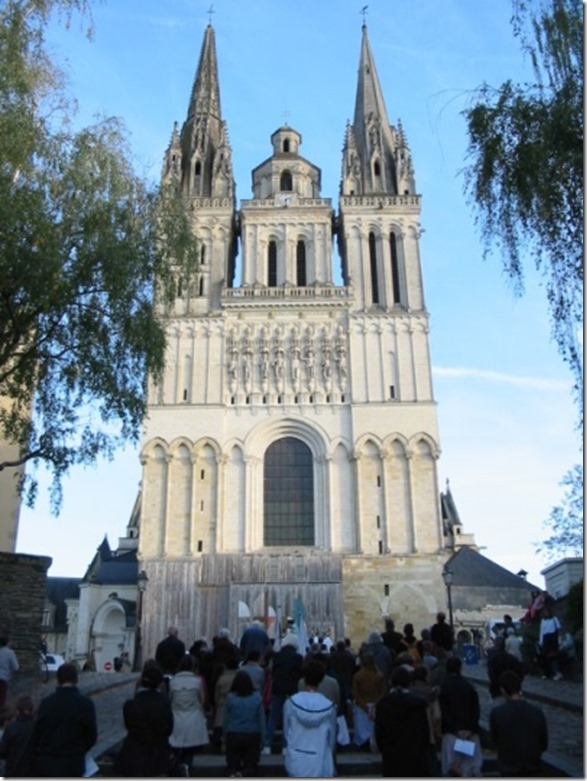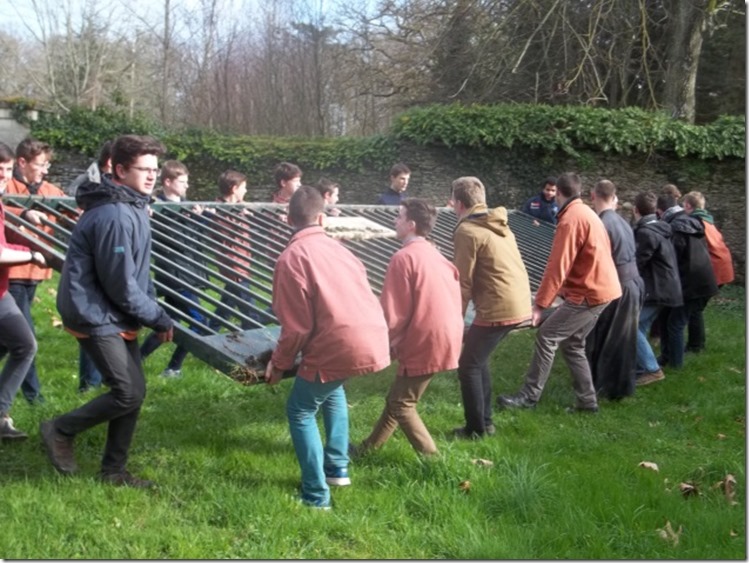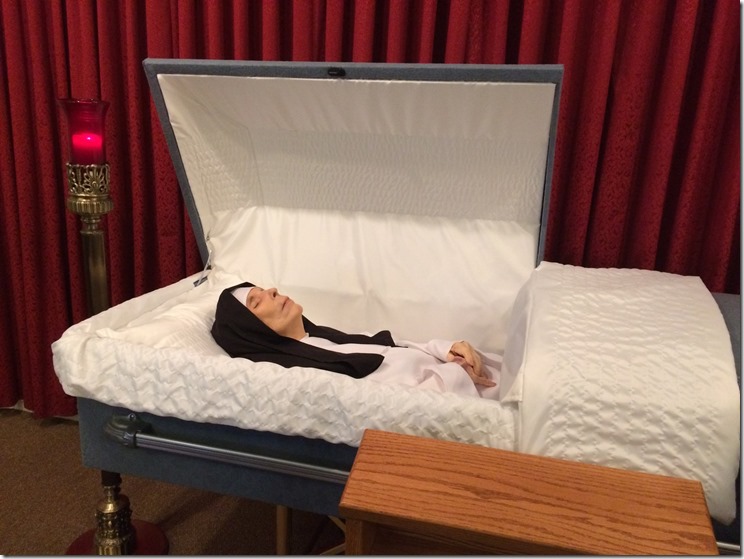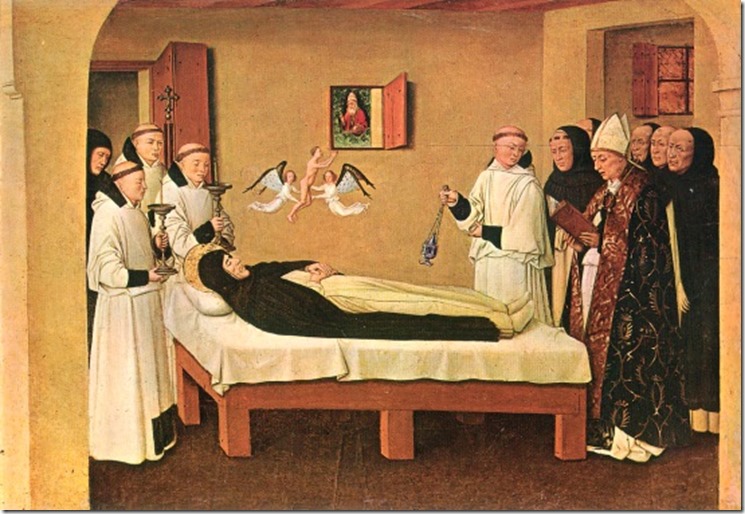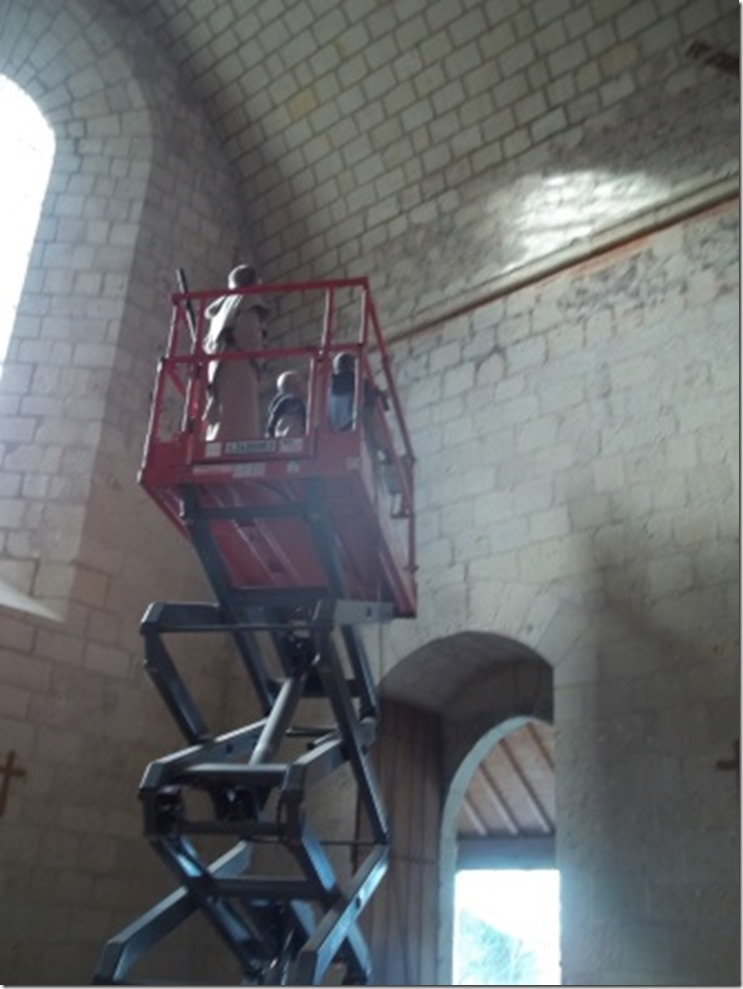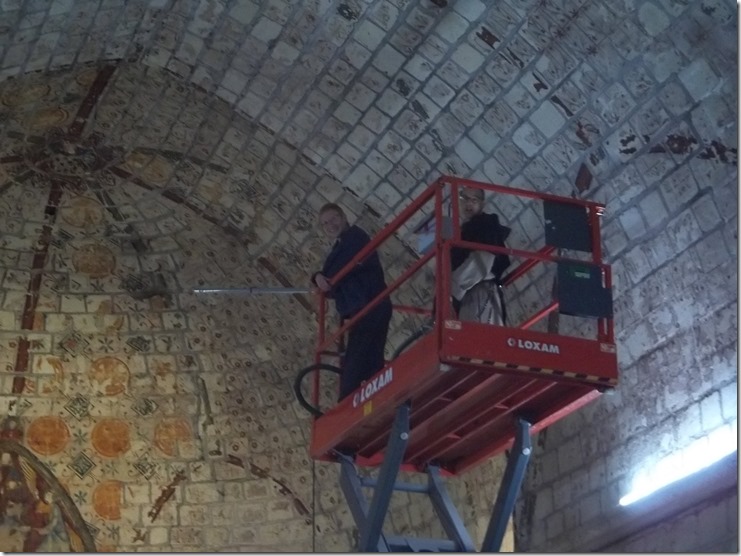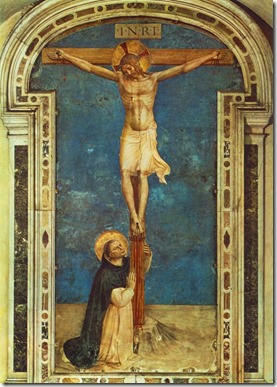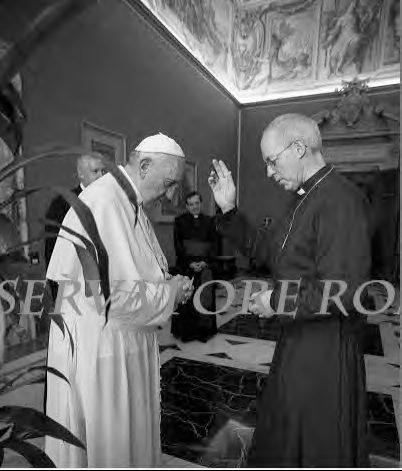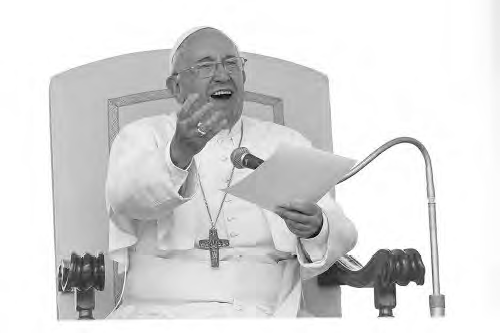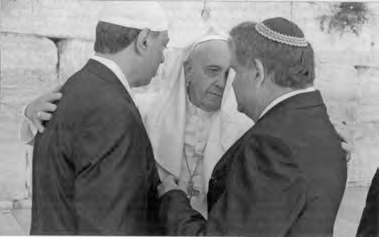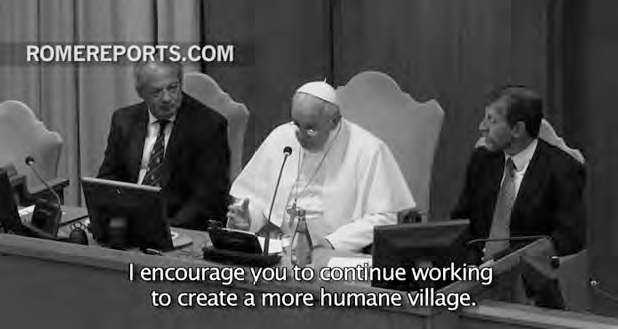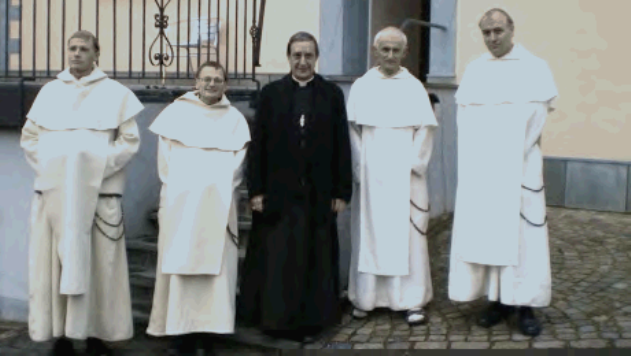Letter from the Dominicans of Avrillé

June 27th, 2024: A new priest for the Friary!
No. 39: September 2024
The War Against Religious (II)
This fictional dialogue between an angel and a pilgrim at Lourdes is taken from a book by Father Marie-Antoine de Lavaur, a Capuchin (1825-1907), one of the founders of the Lourdes pilgrimage, who died in the odor of sanctity. In this book, written in 1879, he describes the wounds from which society suffers. A few months later, on March 29, 1880, the decrees against religious orders were published, which led to the expulsion of religious throughout France (261 establishments, from October 14 to November 8). This text has not aged a bit in almost a century and a half. Here he exposes the greatness of the religious life, as the antidote to modern errors:
[THE ANGEL:] The world feeds on the smoke of pride; the religious soul is passionate about sublime humility, desirous of free, noble and holy obedience.
The world is devoured by the fever of gold, which the religious soul despises and tramples it underfoot.
The world rolls in the mire of its baseness; the religious soul has the wings of an angel to fly far away, and to blossom like a lily in the azure of the skies.
So the greatest wonder is not that there are religious on earth, but that there are still people living the secular life. How can the son of Christ, bearing the royal and priestly seal of Baptism on his forehead (Peter I, 2), still resign himself to being a slave, a slave to idols!
[THE PILGRIM:] What a delight!… and now I am trembling, as a man trembles who suddenly wakes up on the edge of a horrible abyss ready to swallow him, in front of a monster ready to devour him. I, who am not religious, am going to perish, and all those who, like me, live in the world, will perish like me?
[THE ANGEL:] Listen: What Jesus calls “the world” is not this material globe, nor the common life of Christians. This earth is God’s creature, so it is not cursed. In this common life there can be saints, so it is not cursed. Jesus calls “the world” the society of the wicked, and He calls those who make up this society, “men of the world.” You will recognize them by this: they think, speak, and act in a way diametrically opposed to that of Jesus. This “world”, in fact, is cursed.
Thus, there can be no agreement between this world and Jesus. And those who want to stand between the two, by the mere fact, are already lost. Jesus no longer recognizes them as His own: he who is not with me is against me! How many Christians are deluded in this respect and wake up in hell! Here is the terrible danger for those who are not religious: the monster is always there, he covers himself with flowers to better deceive them and, just when they do not think of it, he makes them his victims.
[PILGRIM:] So everyone must embrace the religious life?
[THE ANGEL:] At least everyone must have the spirit, since the religious life is nothing other than the Christian life in its sublime perfection. It is necessary that everyone show consideration for it, and it is necessary that all those who have not had the grace and courage to embrace it, regret it and come as close as possible to it by truly Christian morals. By their perfect obedience to the commandments of God, the Church and the duties of their state, they imitate the religious who obeys. By their detachment from the goods of this world and their horror of pomp and luxury, they imitate the poverty of religious. By their chastity and respect for the great Sacrament of Marriage, they imitate the angelic religious purity. It was to facilitate the practice of these great virtues that Jesus inspired the seraphic Francis to establish the Third Order, glorified by so many saints and recommended by so many pontiffs.
[THE PILGRIM:] So everyone can content himself with this means of sanctification, and remain in the world, without entering religion?
[THE ANGEL:] God forbid! This is only a concession of mercy, but not the triumph of love. The Third Order is only an anchor lent to the poor ship and thrown in the middle of the storm to prevent it from sinking. Religious life is the port!

The Third Order is the ray of sunshine that comes to console and rejoice the poor prisoner in his captivity. Religious life is the full sun of freedom in the pure sky amid blooming flowers!
These flowers, this freedom, this harbor, this sun, Jesus offers them to you, dear Pilgrim, if you are not chained in the bonds of marriage and therefore necessarily captive, necessarily tossed by the storm. You have only to will it, because Jesus calls to religious life all souls of generous good will, and He places no other condition on this sublime vocation. He offers it to all, as he says, pointing to His Heart, His Wounds, His Cross and heaven: if anyone wants to come, let him come.

The future priest and two future deacons prostrate during the Litany of the Saints.
Many hesitate for a long time, and they put themselves in inexpressible anguish to know if they are called. Likewise, those who advise them too often hesitate as well, like them. They believe that one can never reflect long enough! “Error! Illusion!” exclaims the great doctor St. Thomas after many other Saints and Doctors (II-II, q. 186). It is not their vocation that is in doubt; rather it is their good will! Do you want to save yourselves seriously, serve God generously and return love for love to Jesus? You are called. Moreover, “By the very fact,” adds St. Thomas, “that you are thinking of the religious life, and that this thought pursues you, know that it is God who calls you and that it is He who pursues you, because neither the world nor the devil will ever give you this thought. And if the devil, transforming himself into an angel of light, were to give it to you, you would have to listen to him, for it could only be by God that he would have done so” (Opuscule against those who prevent entry into religion, c. 10).
“There is no greater, more praiseworthy, more meritorious work,” concludes the illustrious Doctor, “than to defend the religious life, encourage vocations and assist religious.” (II-II, q. 186) All the great Doctors and masters of the spiritual life conclude that when a confessor is consulted about a vocation, he should always lean towards the religious life and, in case of doubt, decide in its favor.
[Excerpt from Social Plagues and the Mission of Bernadette, ch. 8: The War on Religious]
Pope Pius IX on voting
Pius IX on May 5, 1874: “I bless all those who cooperate in the resurrection of France. I bless them in the hope that they will take up a difficult but necessary task, that of eliminating or reducing a horrible plague afflicting contemporary society, known as universal suffrage. To leave the decision of the most serious questions to the necessarily unintelligent and passionate multitudes, is it not to surrender oneself to random chance and to run voluntarily into the abyss? Yes, universal suffrage would be more deserving of the name of ‘universal madness;’ and when secret societies get hold of it, as happens all too often, that of ‘universal lie.’ “
Chronicle:
April 7th, 2023: Fr. Angelico, at the request of H.E. Bishop Zendejas, departs for the U.S. to celebrate the Holy Week ceremonies in Houston Texas.
April 24th, 2023: Passing by the Friary, H.E. Bishop Thomas Aquinas gives a conference to the community, relating his memories of Archbishop Lefebvre.
May 7th, 2023: Fr. Marie-Laurent accompanies a group of the Knights of Our Lady on a pilgrimage to Pontmain.
June 24th, 2023: Ordination of Fr. Eymeric Blanchet, SAJM, who is now serving in the US, under the obedience of H.E. Bishop Zendejas.
June 29th, 2023: H.E. Bishop Faure is present to celebrate the 40th anniversary of the ordination of Fr. Pierre-Marie (Prior), and the 10th anniversary of the ordinations of Frs. Hyacinthe-Marie and Terence.
July 2023: Summer camps; 30th General Chapter of the Knights of Our Lady; Fr. Marie-Laurent and Br. Pie-Marie are in Prague for a recollection and pilgrimage for our tertiaries.
August 2023: Annual retreat preached by Fr. Picot; solemn vows of Br. Augustin-Marie; Fr. Marie-Dominique is at Holy Cross Benedictine Monastery in Brazil for the priestly ordination of Br. John of the Cross, who accomplished his theological studies at the Friary; on the feast of the Immaculate Heart of Mary, first vows of Sr. Catherine-Marie (Kansas) as a teaching Dominican of Avrillé.
November 3rd, 2023: Inaugural reception in our newly constructed Parish Hall and school cafeteria.
December 24th, 2023: Fr. Marie-Laurent leaves for the U.S. for a two-week tour of retreats (New York, Kansas, Texas). He returns to the U.S. again in March.
January 10th, 2024: Gregorian chant session for the community.
March 2024: Fr. Emmanuel-Marie is down in Bartrès (Lourdes) to help Fr. Innocent-Marie for Holy Week.
April 8th, 2024: Our postulant Maxence Blanchet (brother of Fr. Blanchet) receives the habit, and the new name of Br. Michel-Marie.
June 27th, 2024: H.E. Bishop Faure ordains our Br. Augustin-Marie to the priesthood, whereas Br. Pie-Marie and Mr. Paul Renoult are ordained deacons for the Holy Church. DEO GRATIAS!
July 2024: Fr. Marie-Laurent is in Moscow for the final step of the Fatima-Moscow pilgrimage to obtain the Consecration of Russia through prayer and penance. The Russian people seem very receptive to the message of Our Lady, and many booklets and medals were distributed.
News from our worksites

The new Parish Hall is finished! We now have a school cafeteria in full conformity with regulations, and we’re able to organize large conferences and study sessions in a dignified setting. Thank you to all our benefactors who made this project come to fruition!
We still need to pave the parking lot, which for the moment resembles a warzone. We are also in the process of obtaining the necessary authorizations to restore the West wing of the Friary (severely damaged by rainwater), as well as two buildings of the Priory, necessary for study halls for the numerous boys.

Restoration work at St. Dominic’s Hostel, Bartrès (Lourdes)
For timely articles and spiritual reading, please go to our website:
To send a donation:
YOU MAY USE PAYPAL (ON OUR WEBSITE), OR SEND TO:
Dominicans of Avrillé, Inc.
P.O. Box 23, Newman Lake, WA 99025
Please take note that we no longer have our other bank accounts. Please specify when sending donations to the above address whether your donation is in American or Canadian dollars.
For more information :
Couvent de la Haye-aux-Bonshommes
49240 Avrillé, France


